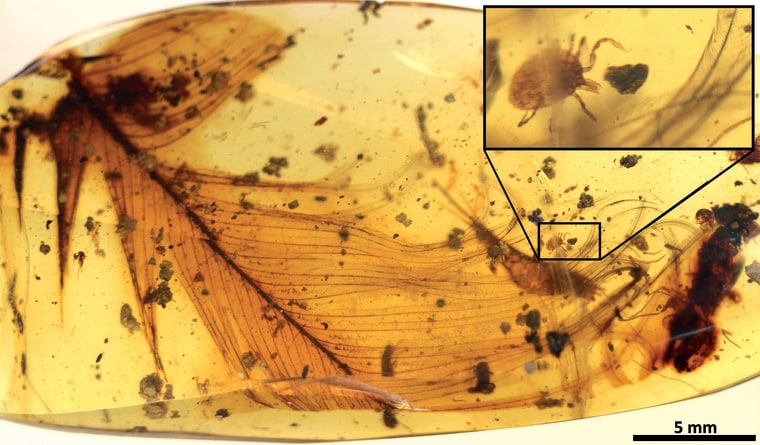Ticks bugged dinosaurs 100 million years ago, new evidence shows.
Scientists have found the bodies of ticks preserved in amber, some stuck to dinosaur feathers, and one engorged with what could well be dinosaur blood.

But before you go thinking Jurassic Park, the researchers warn that the blood is too degraded to yield DNA that could be used to clone the extinct creatures, or even to identify this tick’s last victim.
Their findings, published in the journal Nature Communications, show that ticks fed on dinosaurs and, just as they do today, could have transmitted diseases to them.
"Ticks are infamous blood-sucking, parasitic organisms, having a tremendous impact on the health of humans, livestock, pets, and even wildlife, but until now clear evidence of their role in deep time has been lacking,” said Enrique Peñalver of the Spanish Geological Survey, who worked on the international study team.
The victims were likely feathered theropods — the two-legged dinosaurs that scientists now know often had feathers. Some are ancestors of modern birds.
Related: Mosquito found in amber with blood in its tummy
“Although we can’t be sure what kind of dinosaur the tick was feeding on, the mid-Cretaceous age of the Burmese amber confirms that the feather certainly did not belong to a modern bird, as these appeared much later in theropod evolution according to current fossil and molecular evidence,” said Ricardo Pérez-de la Fuente of the Oxford University Museum of Natural History, who also worked on the study team.
All of the amber came from modern-day Burma and both the ticks and the feathers can be clearly seen.
Two of the ticks were found together and may have lived in a dinosaur nest, eating bits of skin or feathers, as some modern-day ticks do. A third was swollen up to eight times its normal size with what was likely blood, but it was not perfectly preserved and so the blood is decayed.

Fans of Michael Crichton's Jurassic Park will remember the premise of the book and the films is that dinosaur DNA was extracted from mosquitoes embedded in amber and used to makes clones of various species of dinosaurs. In real life, no one has been able to find intact DNA anywhere near that old.
The findings are more of interest to experts studying the evolution of ticks. They identified a new species that has gone extinct, and named it Deinocroton draculi, or “Dracula’s terrible tick”.
